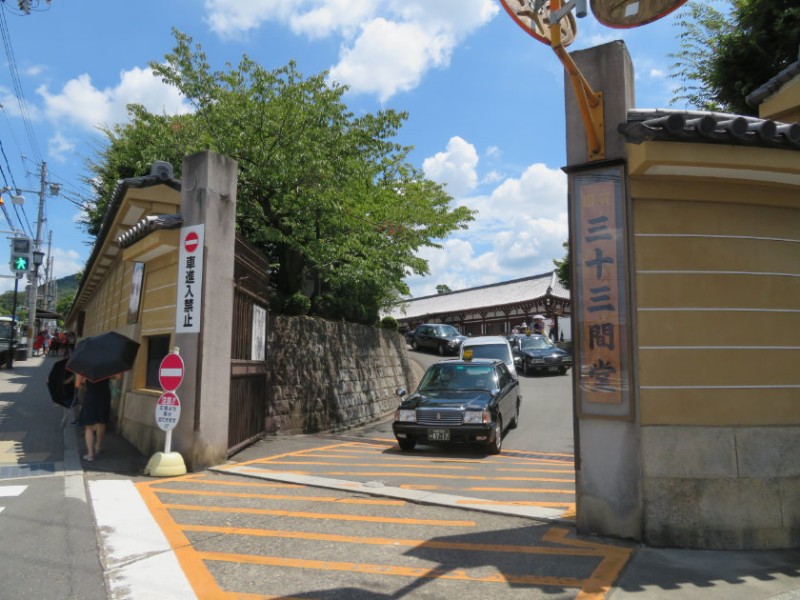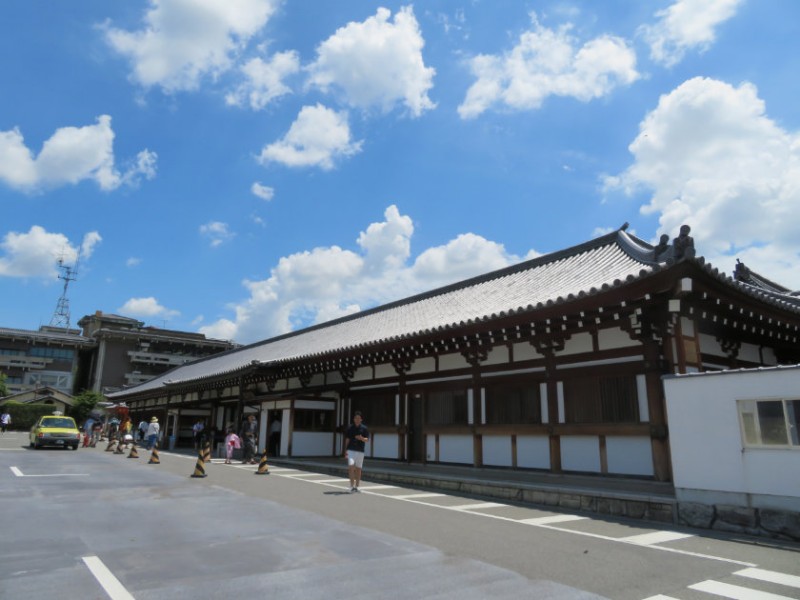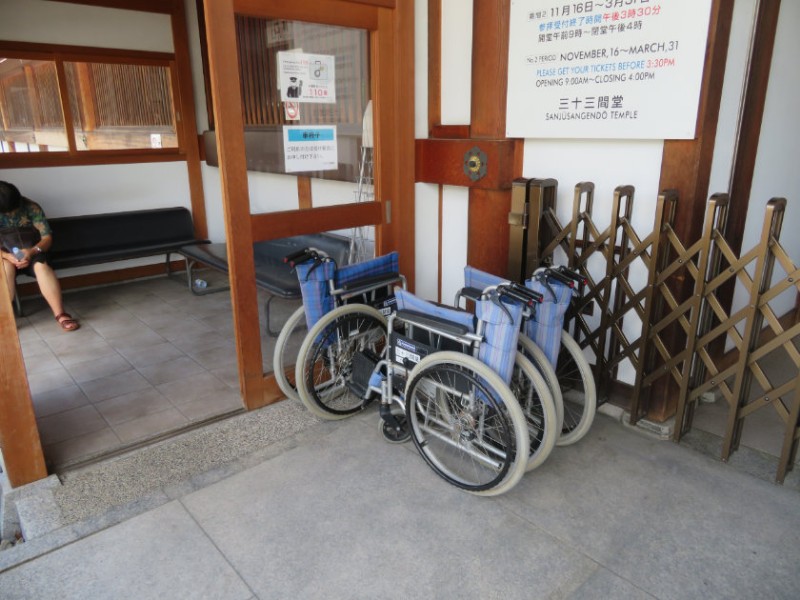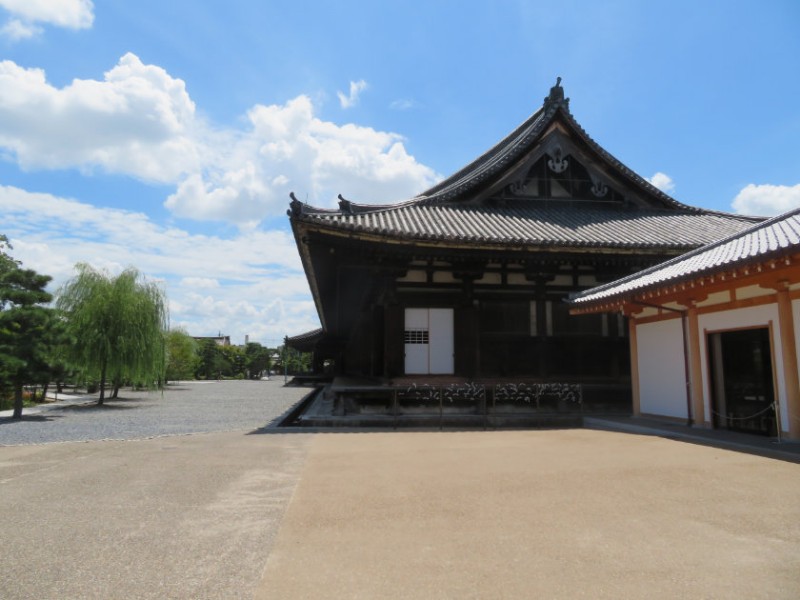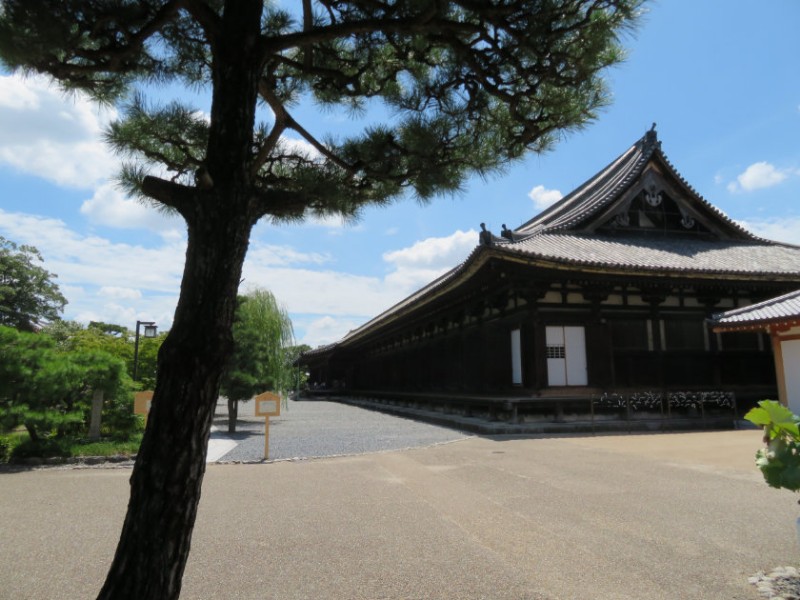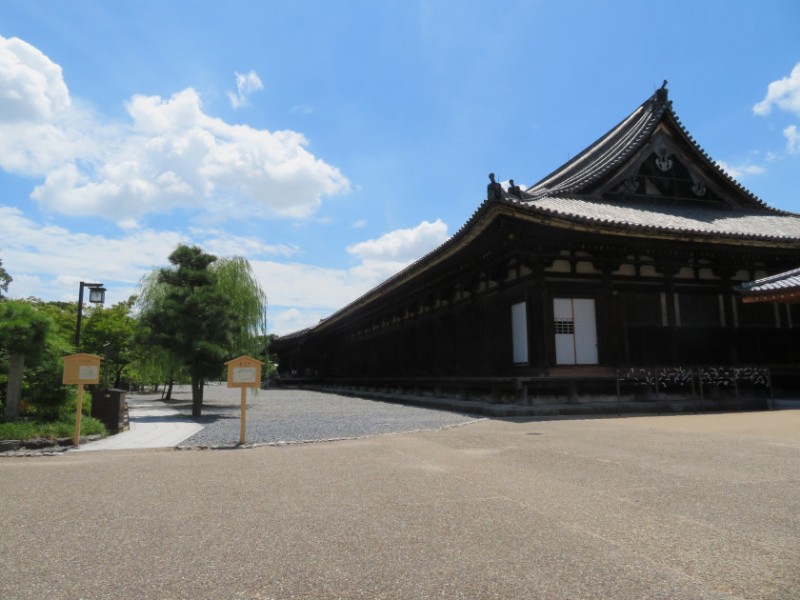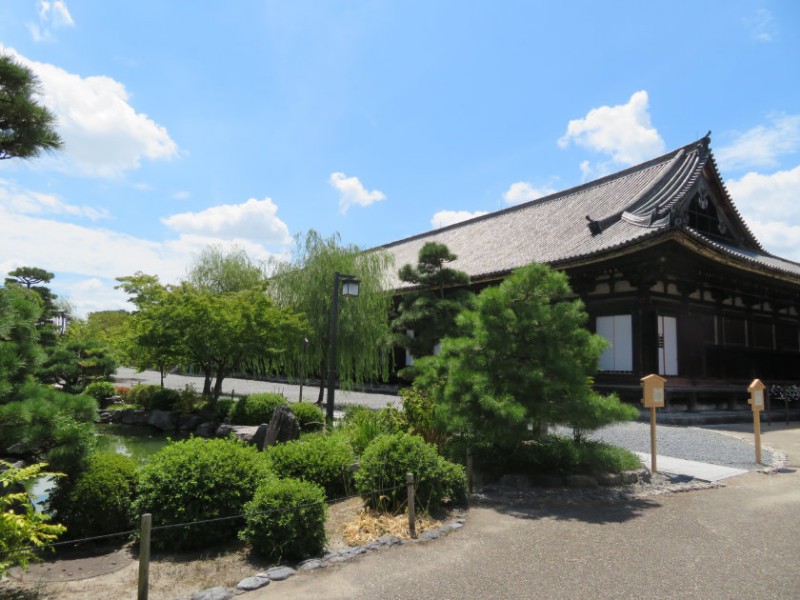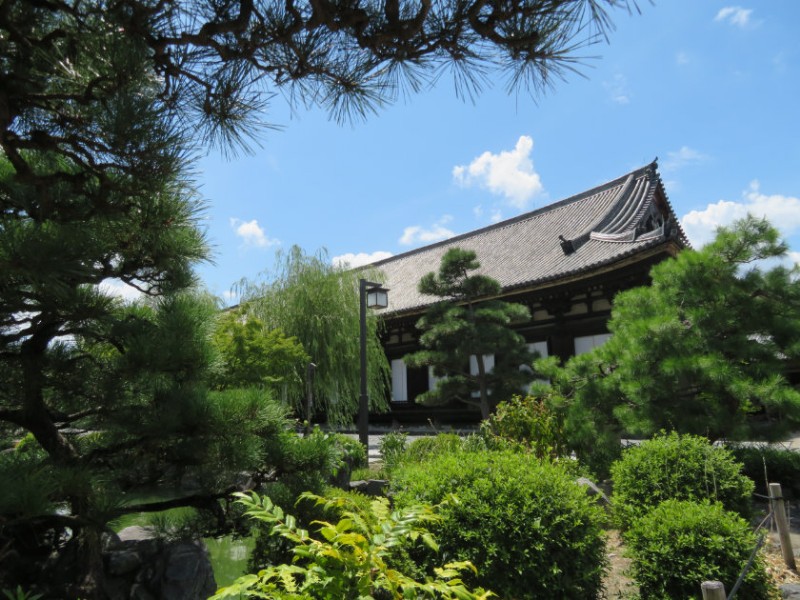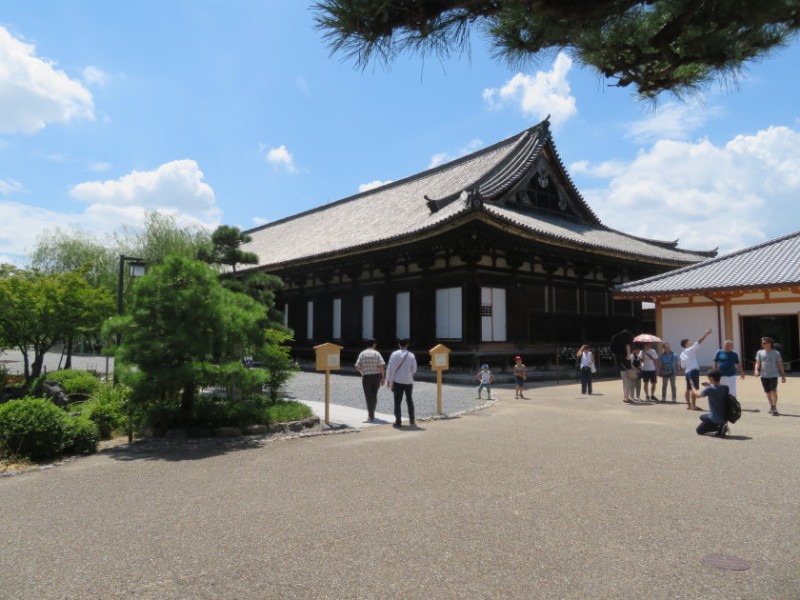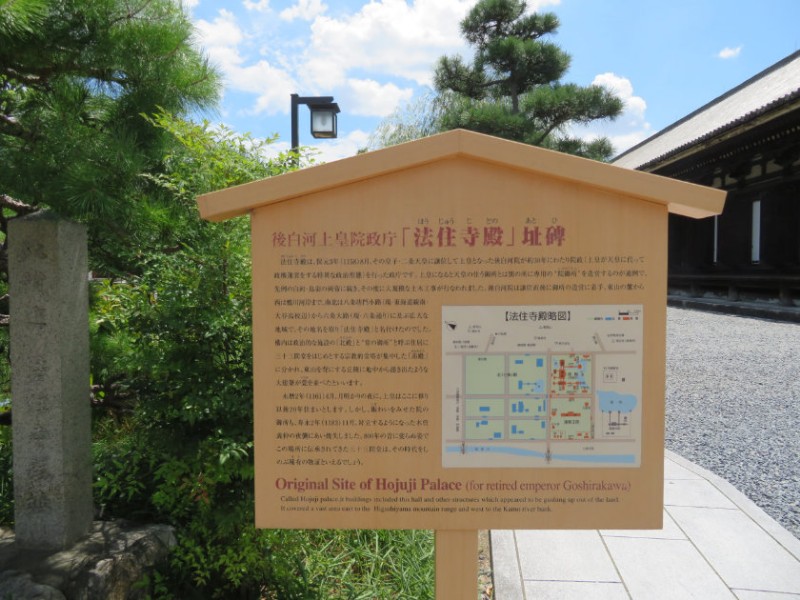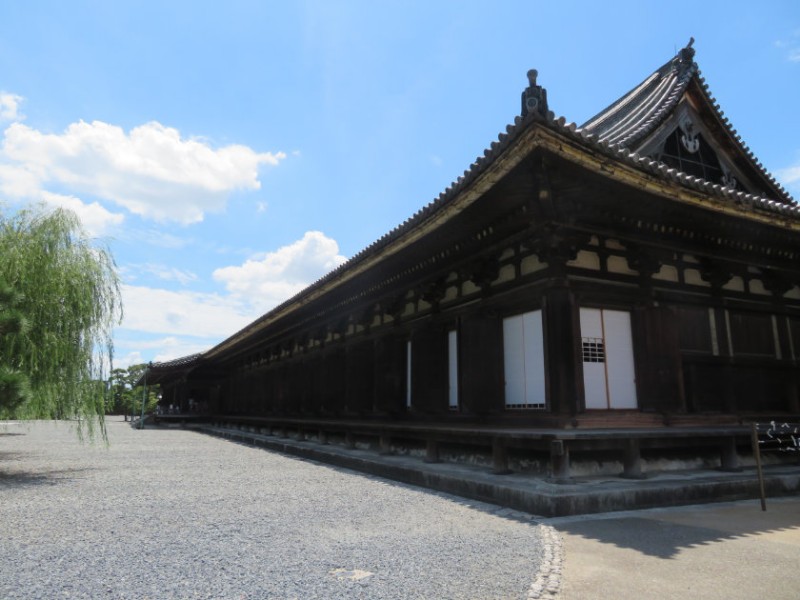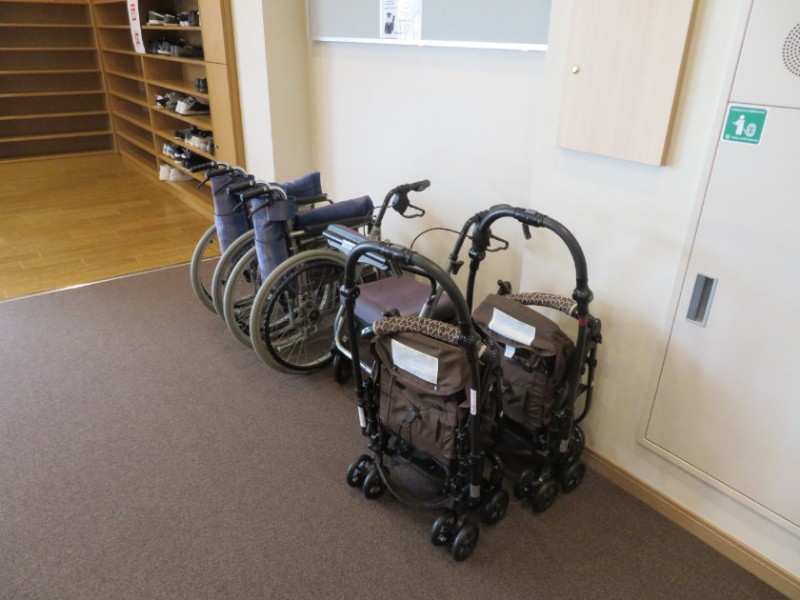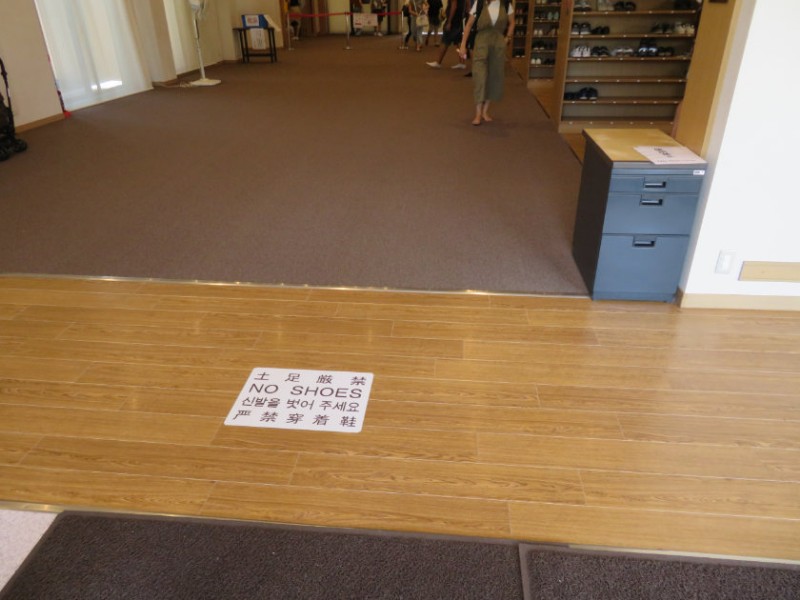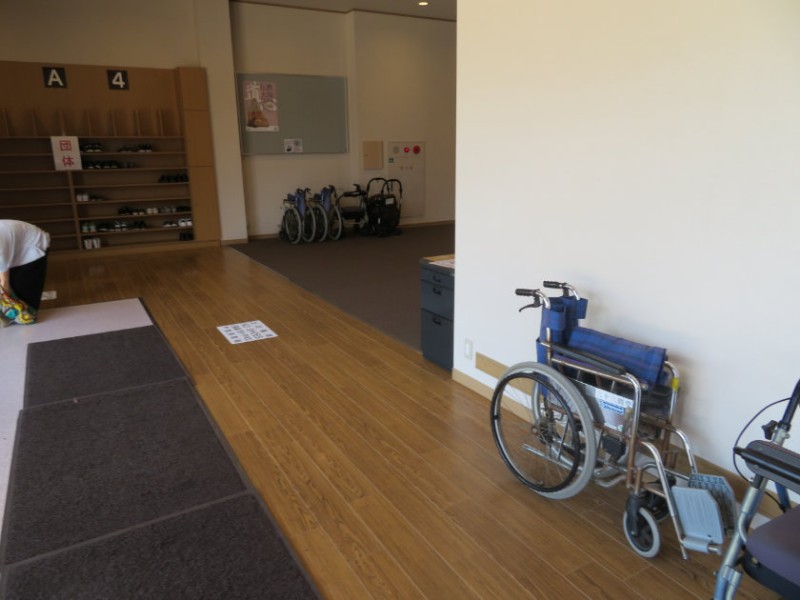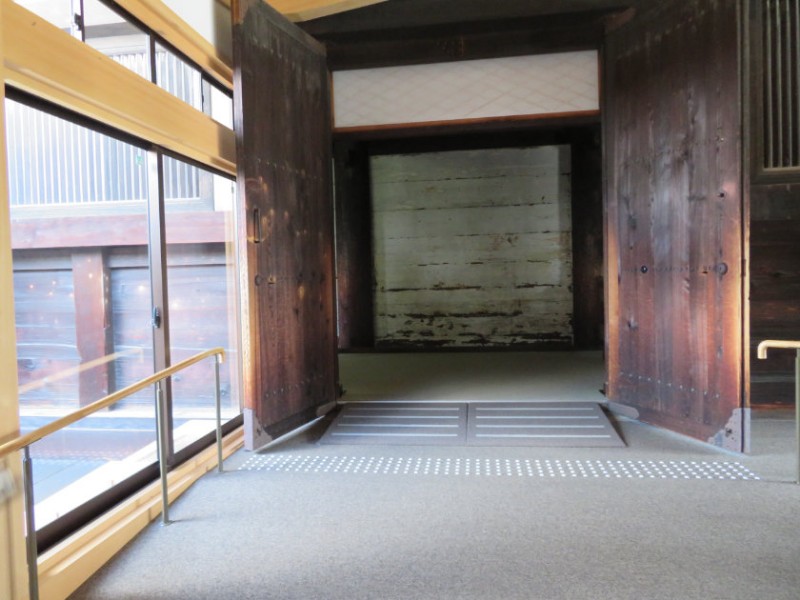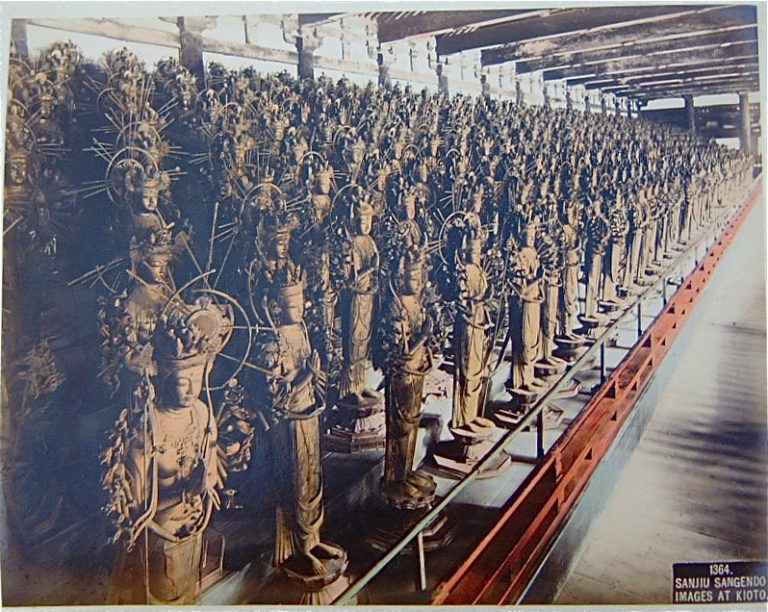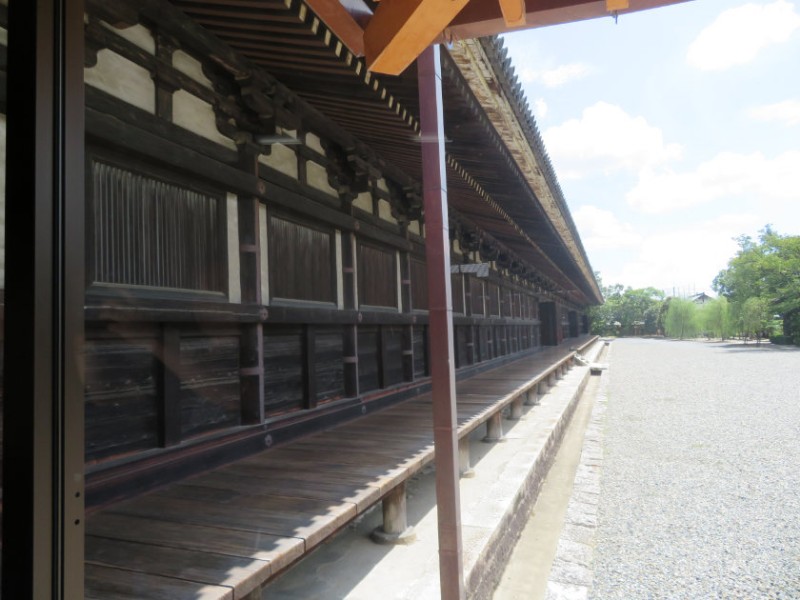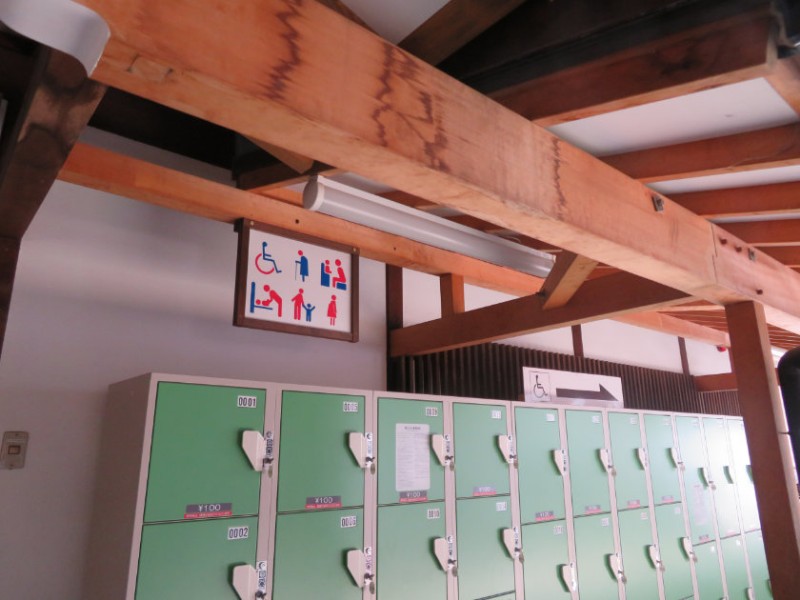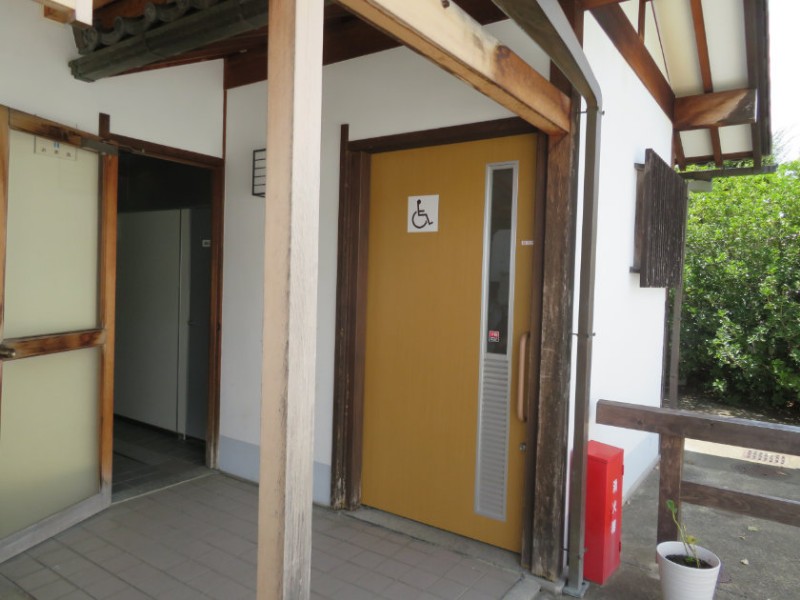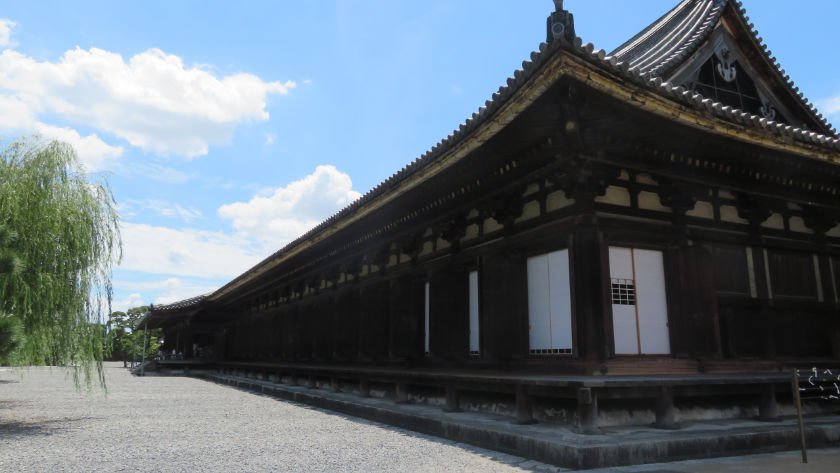
Sanjusangendo and the 1000 golden statues of Kannon, the Buddhist goddess of mercy and compassion, is fully wheelchair accessible and not to be missed.
Background Information
Sanjusangendo is hands down one of the most impressive sights in Kyoto, and it’s unbelievable and unfortunate how many tourists skip this one. Luckily, it’s also one of the most accessible-friendly spots in the city!
Only the main hall remains from the old complex that was built here in the 12th century at the backing of a particularly religious emperor. Not only is the hall the longest wooden building in the world, but it’s one of the oldest original structures in Kyoto. The current hall dates back to 1266, and holds an amazing collection of statues insides.
Meant to be both an inspiring vision of Buddhist paradise and to provide a powerful blessing over the entire nation, a collection of 1000 golden statues is arranged inside of the 120 meter-long hall. Each finely detailed wooden statue depicts Kannon, the Buddhist goddess of mercy and compassion. The variety of faces in the display, as well as the unique 28 guardian statues in the front row, creates a powerfully paradox between the uniformity and creativity of the mass arrangement.
It is best to not Google too much about this special location before visiting, especially avoiding pictures that spoil the impressive nature of the magnificent display. Let this vision of paradise dazzle you as it has for countless visitors over the centuries.
Getting There
Sanjusangendo can be accessed by either the Kyoto bus (Hakubutsukan-Sanjusangendo-mae bus stop) or a short walk from Shichijo Station (Keihan Line) which is accessible. While the bus is closer and accessible, the buses in Kyoto get extremely crowded and the train is a better option.
Accessibility
Sanjusangendo has done a phenomenal job of making its facilities welcoming to all visitors.
The entrance nearest the station has a slight incline, but afterwards everything is very smooth. Alternatively, going a bit further past the first entrance, there is a gate without any incline.
For those who need to borrow a wheelchair, several are available at the entrance.
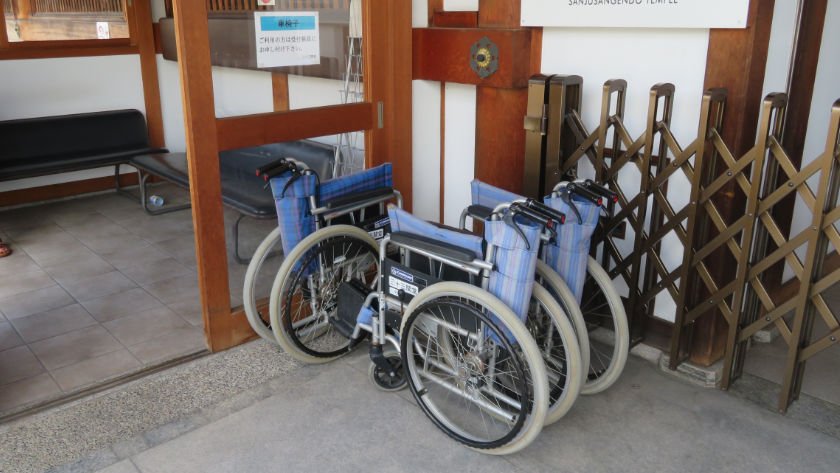
The entire path around the building is wheelchair accessible and even has a sign welcoming wheelchair users.
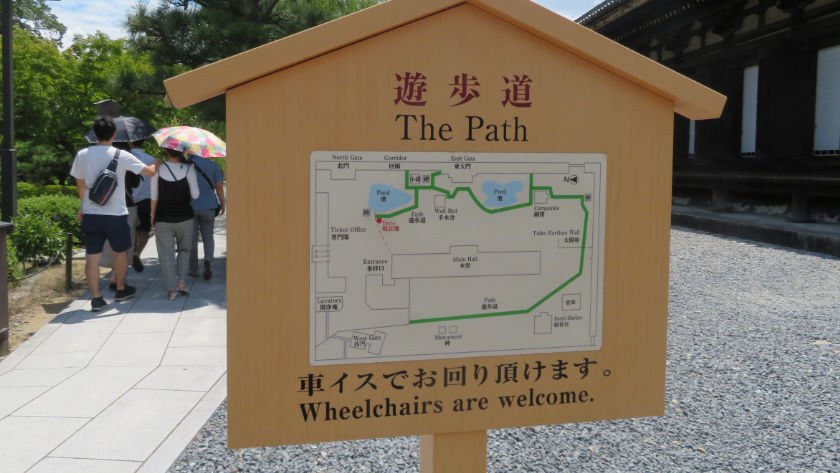
When entering the main hall, visitors must remove their shoes. Wheelchair users can have their tires wiped, or transfer into an indoor-use wheelchair at the entrance.
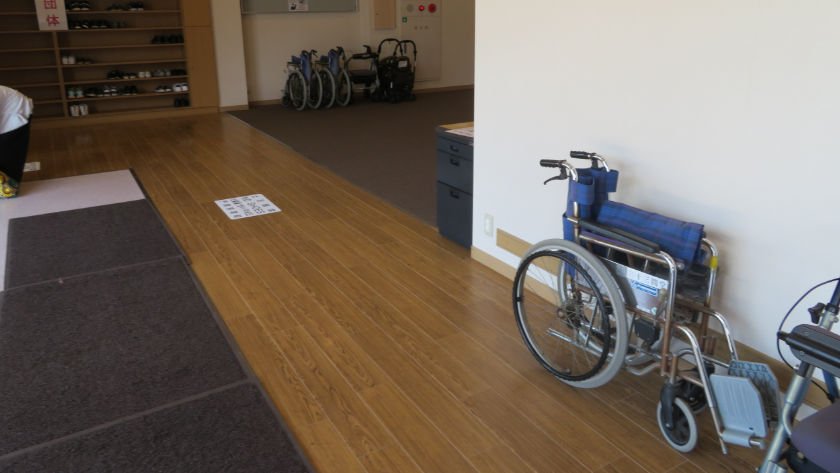
A slope and tactile blocks have been added to the entrance to the hall.

One of the most impressive aspects of the accessibility at Sanjusangendo was the tactile miniature statue at the end of the hall. For those with visual impairments, a model of the statues as well as the building itself have been prepaired for feeling.
As cameras are forbidden in the hall, we do not have any pictures. A picture from the 1890s can be found on Wikipedia.
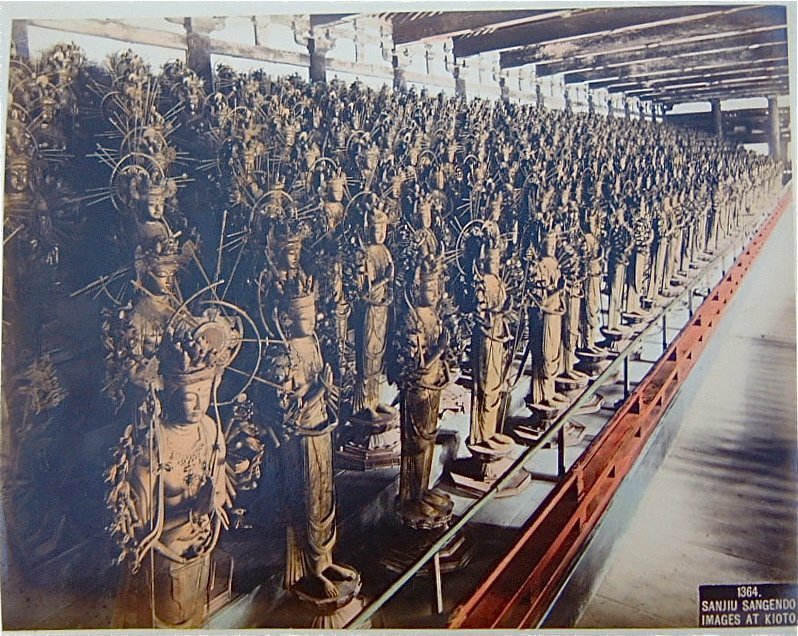
A wheelchair accessible toilet is available.
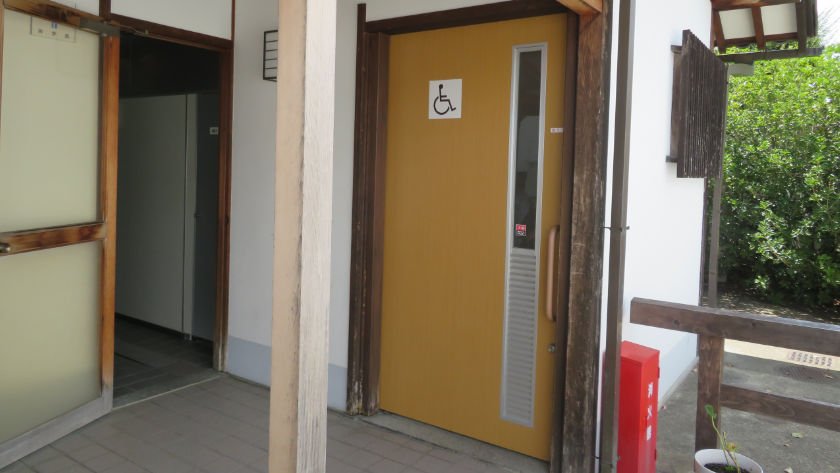
Conclusion
Sanjusangendo is impressive not only as a cultural heritage site, but also as an example of how some simple adaptations can make tourist attractions accessible to all visitors. This site is a must visit.
Credits
Special thanks: Accessible Japan would like to offer a heartfelt thanks to Terin Jackson.
Volunteer contribution help many interested visitors. Thank you!




